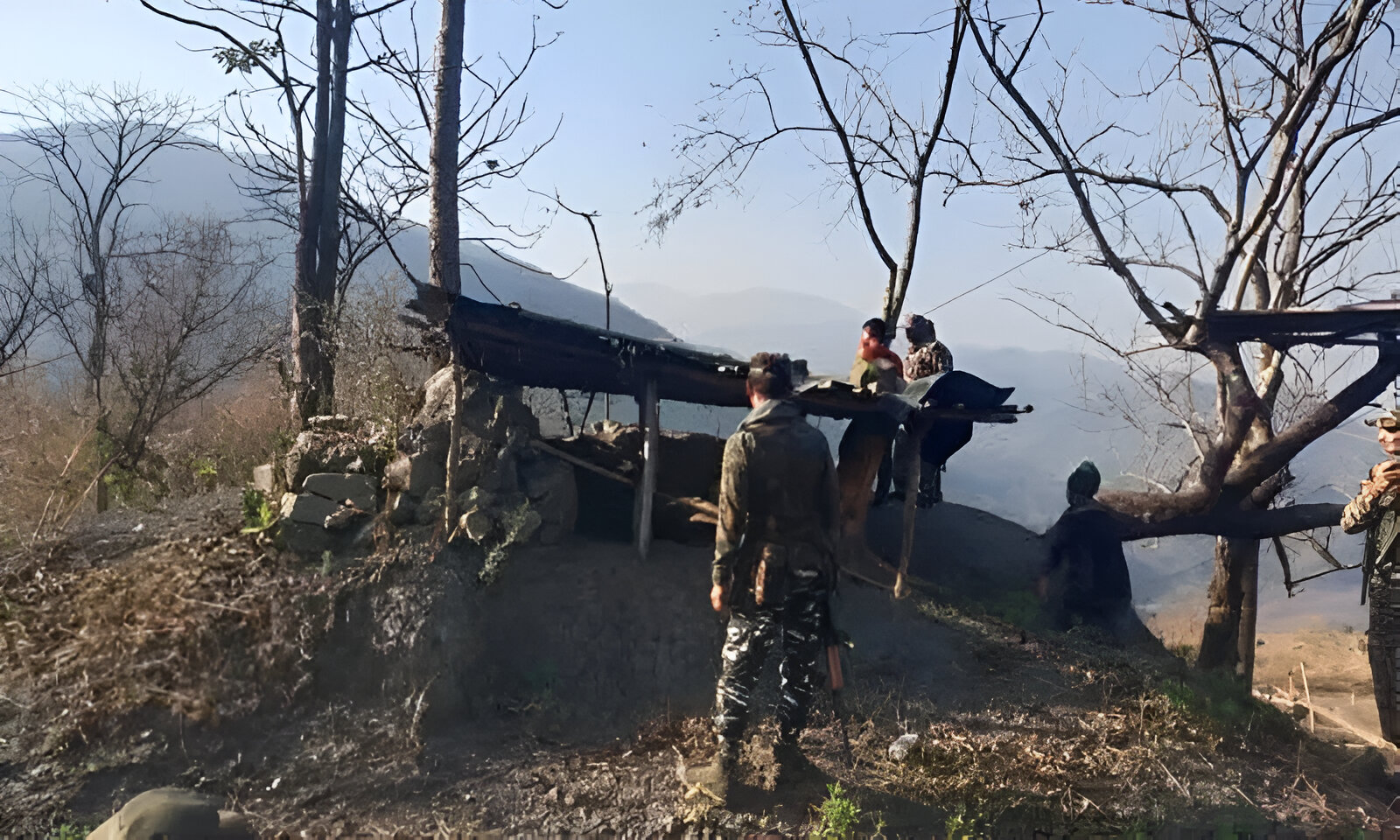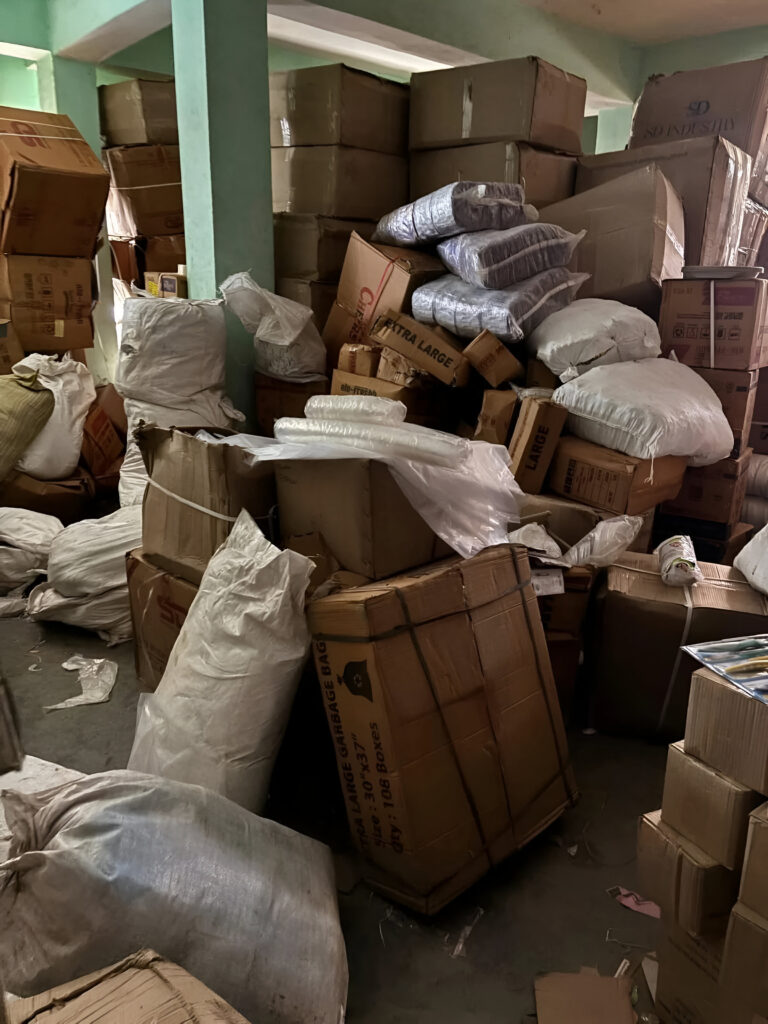Manipur Security Forces Dismantle Five Illegal Bunkers Amid Ongoing Ethnic Tensions
In a significant move to restore peace and order, Manipur’s security forces have dismantled five illegal bunkers set up by armed groups in the Bishnupur and Kangpokpi districts. This operation underscores the ongoing efforts to address the state’s ethnic conflicts and curb violence.
Summary of Recent Developments
In a coordinated operation, central security forces and state police dismantled five bunkers illegally constructed by suspected hill-based underground groups in the Kukimun and Lamdan Kuki Villages under Loktak police station in Bishnupur District, adjacent to Kangpokpi. The operation, lasting approximately four hours, was initiated based on intelligence reports indicating that these bunkers were strategically positioned on elevated terrains to launch attacks on lower-lying targets. Upon sensing the approaching forces, the armed individuals abandoned the bunkers, resulting in no arrests during the operation.
In-Depth Analysis: The Context and Implications of the Bunker Dismantling
Understanding the Ethnic Landscape of Manipur
Manipur, nestled in Northeast India, is a mosaic of diverse ethnic communities, primarily the Meiteis, who predominantly inhabit the Imphal Valley, and the tribal groups like the Kukis and Nagas residing in the surrounding hills. This intricate demographic distribution has historically been a source of cultural richness but has also led to inter-ethnic tensions.
The Genesis of the Conflict
The roots of the current unrest trace back to longstanding grievances over land rights, political representation, and affirmative action policies. In May 2023, these simmering issues erupted into violent clashes between the Meitei and Kuki-Zo communities, resulting in over 250 fatalities and displacing thousands. The violence prompted the central government to impose President’s Rule in February 2025, following the resignation of Chief Minister N Biren Singh, leaving the state assembly in suspended animation.
The Proliferation of Illegal Bunkers
Amid the escalating violence, various armed groups began constructing illegal bunkers in strategic locations, particularly in the hill districts. These fortifications served as offensive and defensive positions, exacerbating the conflict and posing significant challenges to peace efforts.
Recent Security Operations: A Timeline
- February 2025: Security forces dismantled four illegal bunkers in the Saibol-Twiching area of Kangpokpi district. The operation led to clashes with women protesters, resulting in injuries to approximately 40 individuals. timesofindia.indiatimes.com
- March 2025: A joint operation by state and central police forces led to the demolition of 15 illegal bunkers in Kangpokpi district. The raids uncovered a cache of firearms, ammunition, and communication equipment, highlighting the extent of militarization in the region. sentinelassam.com
- Mid-March 2025: The latest operation resulted in the dismantling of five bunkers in the Bishnupur and Kangpokpi districts. Despite the absence of arrests, the operation signifies a proactive approach to curbing the activities of armed groups.
The Surrender of Illegal Firearms
In tandem with bunker dismantling, authorities have intensified efforts to recover illegal firearms. Following a call from Governor Ajay Kumar Bhalla for the surrender of looted and unauthorized weapons, over 300 firearms were surrendered by the public, primarily in the valley districts. The deadline for surrender was extended to March 6, 2025, reflecting the administration’s commitment to disarmament and de-escalation.
Challenges in Restoring Peace
Despite these efforts, restoring peace in Manipur faces several hurdles:
- Deep-Rooted Distrust: Years of inter-ethnic violence have fostered deep-seated mistrust among communities, complicating reconciliation efforts.
- Militarization of Civilian Areas: The proliferation of illegal bunkers and firearms has blurred the lines between civilian and combatant, making security operations more complex.
- Humanitarian Concerns: Clashes between security forces and civilians, particularly women protesters, have raised human rights concerns and fueled further resentment.
The Path Forward: Strategies for Sustainable Peace
To navigate the turbulent waters of Manipur’s ethnic conflict, a multifaceted approach is imperative:
1. Inclusive Dialogue
Establishing platforms for inclusive dialogue that encompass all ethnic communities is crucial. These platforms should aim to address historical grievances, promote mutual understanding, and forge a shared vision for the state’s future.
2. Strengthening Local Governance
Empowering local governance structures can facilitate community-driven development and conflict resolution, ensuring that solutions are tailored to the unique contexts of each community.
3. Socio-Economic Development
Investing in socio-economic development, particularly in conflict-affected areas, can address underlying issues such as unemployment and poverty, which often fuel unrest.
4. Security Sector Reforms
Implementing reforms within the security sector to ensure accountability and community engagement can build trust and enhance the effectiveness of peacekeeping efforts.
5. Transitional Justice Mechanisms
Establishing transitional justice mechanisms to address past human rights violations can promote healing and reconciliation among affected communities.
Conclusion
The dismantling of illegal bunkers by Manipur’s security forces represents a significant step toward restoring law and order in the state. However, achieving sustainable peace requires addressing the root causes of the conflict through inclusive dialogue, socio-economic development, and comprehensive security reforms. As Manipur stands at this critical juncture, the collective efforts of the government, civil society, and local communities will determine the trajectory toward lasting peace and prosperity.
FAQs
- What led to the dismantling of the bunkers in Manipur?
The operation was initiated after months of careful intelligence gathering that revealed the bunkers were being used by insurgents as strategic hideouts. The move was part of a larger effort to disrupt militant networks and enhance regional security. - How do bunkers support insurgency efforts in Manipur?
Bunkers serve as fortified bases where militants can plan operations, store supplies, and coordinate activities away from prying eyes. Their dismantling significantly hampers the operational capabilities of these groups. - What challenges do security forces face in dismantling such bunkers?
The difficult terrain of Manipur, including hilly regions and dense forests, combined with the evolving tactics of militants, makes locating and neutralizing these bunkers a complex task that requires advanced planning and technology. - How has the local community reacted to these security operations?
Many local residents view the dismantling of bunkers as a positive step towards restoring peace and stability. While there is cautious optimism, some also remain vigilant about potential militant retaliation or regrouping. - What could be the long-term impact of such operations on regional security?
Successfully dismantling militant infrastructures not only disrupts their immediate activities but also serves as a deterrent to future insurgency efforts. In the long term, this contributes to improved public safety and confidence in the government’s commitment to maintaining peace.


